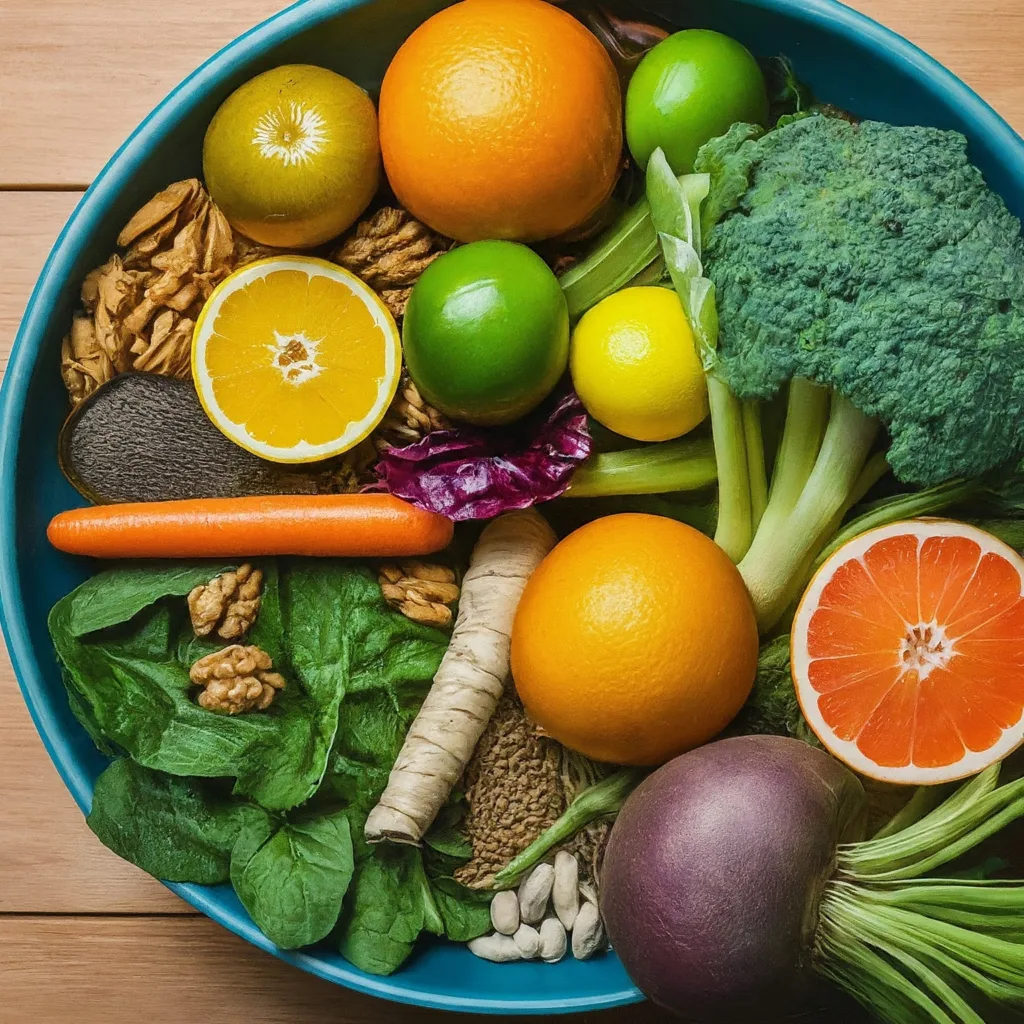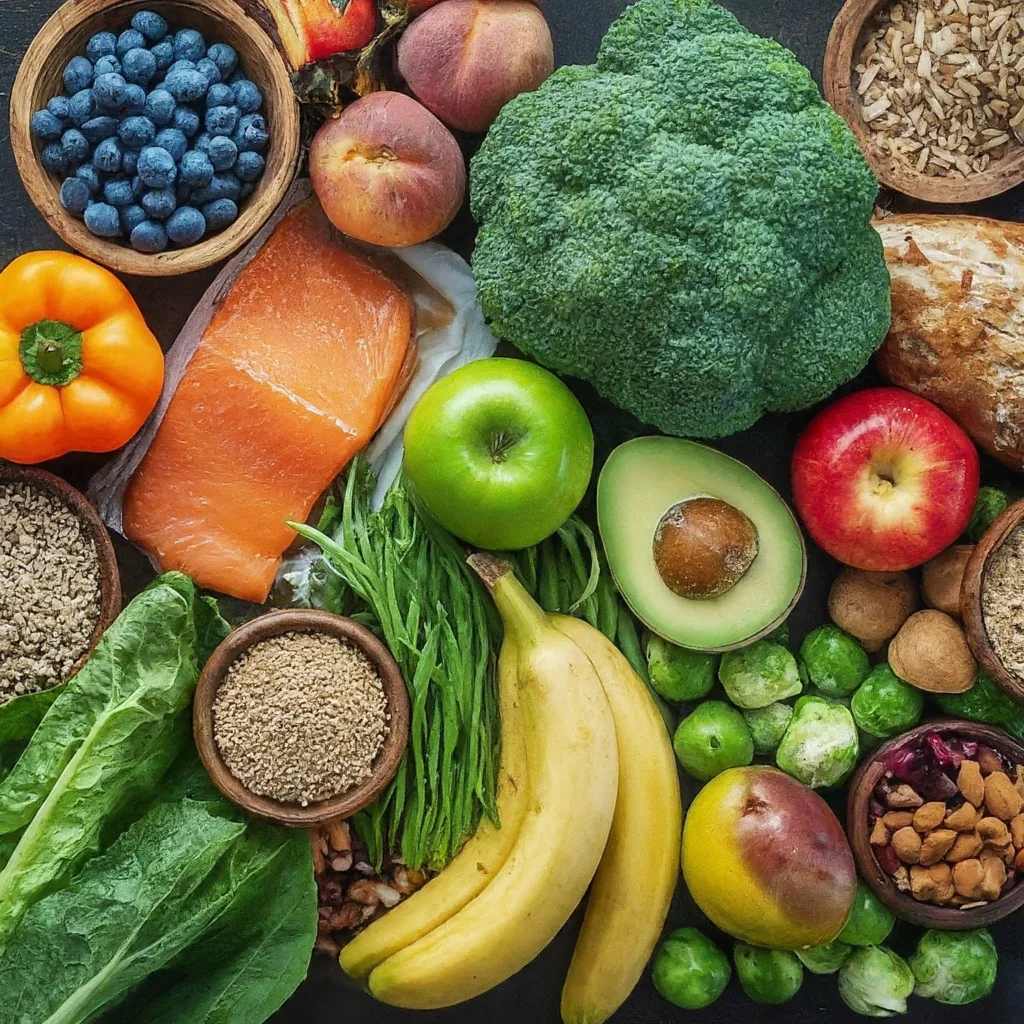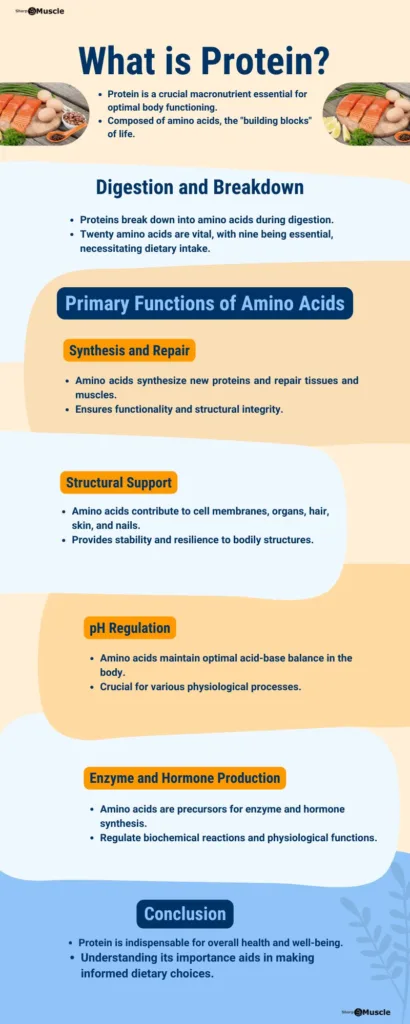Dietary principles and guidelines are essential for maintaining good health and preventing various diseases. Different organizations and health experts may provide slightly different recommendations, but there are common principles that are widely accepted.
In This Article
In today’s fast-paced world, understanding balanced diet tips and incorporating portion control techniques are essential for optimizing your health.
As we continue on this journey, let’s grasp the importance of these dietary principles and guidelines. Our dietary choices that we make regarding what we eat can have a profound impact on our overall health and vitality. This article aims to provide you with actionable insights into nutrient-rich fruits and vegetables, protein variety for optimal nutrition, and the sources and benefits of healthy fats.
Building a Balanced Diet Plate
Typically, establishing a healthy diet involves eating a wide variety of nutrient-rich fruits and vegetables while minimizing the intake of processed foods. For personalized guidance on how to enhance your dietary habits, it’s recommended to consult with your doctor or a registered dietitian. They can provide tailored advice, including balanced diet tips, portion control techniques, and insights into protein variety for optimal nutrition, ensuring your dietary choices align with your health goals.
What is a balanced diet?
A balanced diet is essentially about supplying your body with the essential nutrients required for optimal functioning. Achieving this involves prioritizing the consumption of fresh fruits, vegetables, whole grains, legumes, nuts, and lean proteins in your daily calorie intake.
These dietary principles and guidelines are crucial, aligning with recommendations from sources like the Dietary Guidelines for Americans.1 These guidelines offer valuable insights into the appropriate daily consumption of nutrients, providing a roadmap for your nutritional journey.
Balance Diet Tips
So, to build a balanced diet, it’s important to grasp the underlying concepts that influence calorie intake and food choices. It’s not just about restricting certain foods; rather, it’s about taking a comprehensive strategy that recognizes the value of including a range of food groups.
Maintaining good health over the course of your life is facilitated by adhering to a balanced diet, which diminishes the likelihood of encountering chronic health conditions and diseases.
Conversely, an inadequate diet can impede optimal functioning, potentially leading to instances of infection, fatigue, cognitive sluggishness, or other health issues.
It’s noteworthy that several major causes of mortality, such as heart disease, type 2 diabetes, cancer, and stroke, are closely linked to suboptimal dietary habits.
Understanding Calories
The foods you consume play a pivotal role in determining your daily caloric intake. Calories, as a measure of energy derived from the breakdown and metabolism of food, are essential for sustaining your body’s functions.
Understanding the optimal caloric needs for your body involves considering factors such as age, gender, and activity level. Men generally require a higher caloric intake compared to women, and there are variations in caloric needs across different age groups.
According to current dietary principles and guidelines, the recommended caloric requirements vary across different life stages2:
- For instance, sedentary children aged 2–8 years typically require 1,000–1,400 calories, while active children in the same age group may require 1,000–2,000 calories. Gender differences become more pronounced in adolescence, with females aged 9–13 requiring 1,400–2,200 calories, and males in the same age range requiring 1,600–2,600 calories.
- As we transition to young adulthood (14–30 years), caloric needs reach their peak, particularly for those leading active lifestyles. Active females in this age group may require around 2,400 calories, while sedentary females may need 1,800–2,000 calories. On the male side, active individuals might need 2,800–3,200 calories, whereas sedentary males may require 2,000–2,600 calories.
- Moving into adulthood (30 years and over), caloric needs start to decline. For active individuals, the recommended range is 2,000–3,000 calories, while sedentary individuals may need 1,600–2,400 calories.
By aligning your dietary choices with these guidelines, you can better meet your body’s caloric requirements, promoting overall health and well-being.
Food Choice: Creating Balanced Diet Tips
Make choices that prioritize nutrient-rich fruits and vegetables, as they offer optimal nutritional value relative to their calorie content. By selecting high-quality foods rich in essential components, you provide your body with a well-rounded array of nutrients necessary for sustained well-being.
These nutrient-rich fruits and vegetables options encompass a variety of essential elements, including vitamins, minerals, fiber, healthy fats, carbohydrates, protein, and other valuable components like antioxidants.
By including these elements into your dietary choices, you’re not just consuming calories; you’re fueling your body with a variety of nutrients essential for overall health.
Foods to Avoid or Limit: Certain Foods to Align with Dietary Principles and Guidelines
Steer clear of or regulate your consumption of certain foods to align with Dietary Principles and Guidelines. Be mindful of foods that are often deemed nutrient-poor, as they tend to offer empty calories without substantial nutritional benefits.
Examples of such foods include, which may contribute to elevated risks of health issues:
- Highly Processed Foods
- Refined Grains
- Foods high in Refined Sugars
Additionally, being cautious with the intake of Sweetened Drinks, Red and Processed Meats, and sources of Saturated and Trans Fats aligns with the emphasis on Protein Variety for Optimal Nutrition and Healthy Fats Sources and Benefits.
It’s imperative to be aware of the impact of High-Glycemic Foods, as they can affect blood sugar levels. In terms of Hidden Sources of Added Sugars, being mindful of these elements is crucial, considering their potential impact on tooth decay and obesity.
Moreover, Sodium Reduction Strategies become essential as excess sodium can lead to increased blood pressure, raising risks for heart disease and stroke. Similarly, monitoring added sugars is crucial to mitigate risks associated with dental health and obesity.
When it comes to alcoholic beverages, being mindful of their effects on cholesterol, triglycerides, and insulin levels is crucial. Alcohol consumption is associated with potential risks, including liver inflammation or scarring, elevated blood pressure, weight gain, and certain types of cancer.
These considerations underscore the importance of Mindful Eating and overall Meal Planning to make informed choices for your health.
Nutrient-rich Fruits and Vegetables: The Six Core Food Elements
Embarking on a journey towards a nutritious lifestyle involves understanding the composition of the six core food elements, as outlined by Dietary Principles and Guidelines.
1. Proteins
Constitute a quarter of your plate, equivalent to about 5.5 ounces daily.
Opt for lean sources like seafood (including salmon, sardines, and other oily fish), poultry (such as chicken and turkey), red meats (such as beef and mutton), nuts and legumes (such as almonds, sunflower seeds, walnuts, lentils, beans, and peas), tofu, tempeh, and other soy-based products for protein variety and optimal nutrition.
2. Fruits
Comprise another quarter of your plate, roughly 2 cups a day. Choose a mix of dried, fresh, or frozen fruits, prioritizing a diverse array of colors for maximum nutrient intake.
Be mindful of hidden sources of added sugars, especially in fruit juices.
Fruits offer a nutritious and delightful option for snacks or desserts, catering to a sweet tooth while being high in natural sugars. Unlike candies and numerous sweet desserts, fruits come bundled with fiber and various nutrients. This natural composition makes them less likely to cause abrupt sugar spikes and, concurrently, enhances the body’s intake of crucial vitamins, minerals, and antioxidants.
For individuals with diabetes, seeking guidance from a healthcare professional, be it a doctor or a dietitian, is essential. They can provide personalized advice on the selection of fruits, portion sizes, and optimal timing to align with dietary needs.
3. Vegetables
Fill a quarter of your plate if fruits are included, or half if not, totaling 2.5-3.5 cups daily.
Vegetables play a crucial role as a primary source of essential vitamins, minerals, and antioxidants. Ensure a diverse intake of vegetables, incorporating various colors to access a comprehensive spectrum of nutrients.
So, select from various subgroups, including Dark Green Vegetables and Red and Orange Vegetables (such as spinach, kale, green beans, broccoli, collard greens, and swiss chard), to maximize nutritional benefits.
4. Grains
Occupy another quarter of your plate, totaling about 6 ounces per day.
Prioritize Whole Grain Options like quinoa, oats, and brown rice to enhance the nutritional profile of your diet.
Many breads and baked goods prominently use refined white flour, yet it offers minimal nutritional value. The removal of the grain’s outer shell, or hull, and the central “wheat germ” during processing eliminates much of the goodness.
To enhance nutritional intake, consider transitioning from white breads, pastas, and rice to whole grain alternatives.
5. Fats/Oils
While essential for a balanced diet, focus on healthy unsaturated oils like extra virgin olive oil, limiting intake to approximately 27 grams daily.
Include sources like chia seeds, avocado, and fish for Healthy Fats and Optimal Nutrition.
Newer studies indicate that substituting partially with unsaturated fats reduces the risk of cardiovascular disease. It is now recommended to include a modest amount, around 10 percent or less of calories, of saturated fats in the diet. Nevertheless, it remains crucial to steer clear of trans fats.
6. Dairy
Integrate three cups daily from low-fat or fat-free sources like yogurt and cheese, ensuring adequate calcium intake for strong teeth and bones.
By adopting this balanced approach, you not only fuel your body with energy but also ensure a comprehensive intake of essential nutrients. If maintaining a healthy diet poses challenges or if certain foods present difficulties, consulting with a healthcare professional is advisable.
Do you obtain your 5 A Day from Nutrient-rich fruits and vegetables?
Are you meeting your daily 5 A Day recommendation through a variety of Nutrient-Rich fruits and vegetables?
Research indicates that individuals consuming at least 5 portions daily may experience a reduced risk of heart disease, stroke, and certain cancers. 3 4 5
These fruits and vegetables contribute significantly to your daily intake of essential vitamins, minerals, and fiber, constituting just over a third of your daily food consumption. Health experts recommend incorporating a minimum of 5 portions of diverse fruits and vegetables into your daily diet. These portions can be derived from fresh, frozen, canned, dried, or juiced options.
Achieving this goal isn’t as challenging as it may seem. A portion can take various forms, such as 80g of fresh, canned, or frozen fruits and vegetables, 30g of dried fruits (preferably with meals), or a 150ml glass of fruit juice or smoothie—though it’s advisable to limit these sugary drinks to one portion per day to protect teeth.
Simple additions like an apple, banana, or pear, each considered one portion, can easily fit into your daily routine. A slice of pineapple or melon also counts as one portion, while three heaped tablespoons of vegetables contribute another. Sprinkling a tablespoon of dried fruit, like raisins, onto your morning cereal effortlessly fulfills one portion.
Small changes, such as swapping a mid-morning biscuit for a banana or incorporating a side salad into your lunch, can help you reach your 5 A Day target. In the evening, including a portion of vegetables with dinner and enjoying fresh fruit with plain, lower-fat yogurt for dessert makes achieving this goal delicious and accessible.
FAQs on Dietary Principles and Guidelines
This collection of frequently asked questions explores into the topic of “Dietary Principles and Guidelines for Optimal Performance,” providing a comprehensive guide to those seeking to elevate their performance through informed nutritional choices.
From the role of macronutrients in fuelling our efforts to the finer points of nutritional planning, we start on a quest to understand the importance of a nutritious diet in reaching peak physical performance. The question will go further into concerns like protein, carbs, fats, caloric intake, hydration, and the personalized approach to nutrition. The goal is to provide you with the knowledge you need to make informed choices that align with your specific requirements and goals.
Whether you are an athlete striving for excellence, a fitness enthusiast looking to improve the way you workout, or someone devoted to general well-being, these FAQs are intended to give clarity on the concepts that underlie optimum performance. Let us clear the complexity of nutrition, clarify some common misunderstandings, and bring your way to a healthier, stronger self.
- 2015-2020 Dietary Guidelines | health.gov. (n.d.).[↩]
- 2015-2020 Dietary Guidelines | health.gov, n.d.[↩]
- Boeing H, Bechthold A, Bub A, Ellinger S, Haller D, Kroke A, Leschik-Bonnet E, Müller MJ, Oberritter H, Schulze M, Stehle P, Watzl B. “Critical review: vegetables and fruit in the prevention of chronic diseases.” Eur J Nutr. 2012 Sep;51(6):637-63. doi: 10.1007/s00394-012-0380-y. Epub 2012 Jun 9. PMID: 22684631; PMCID: PMC3419346.[↩]
- Website, N. (2023, April 4). Why 5 A Day? nhs.uk.[↩]
- Website, N. (2023, February 10). 5 A Day portion sizes. nhs.uk.[↩]














